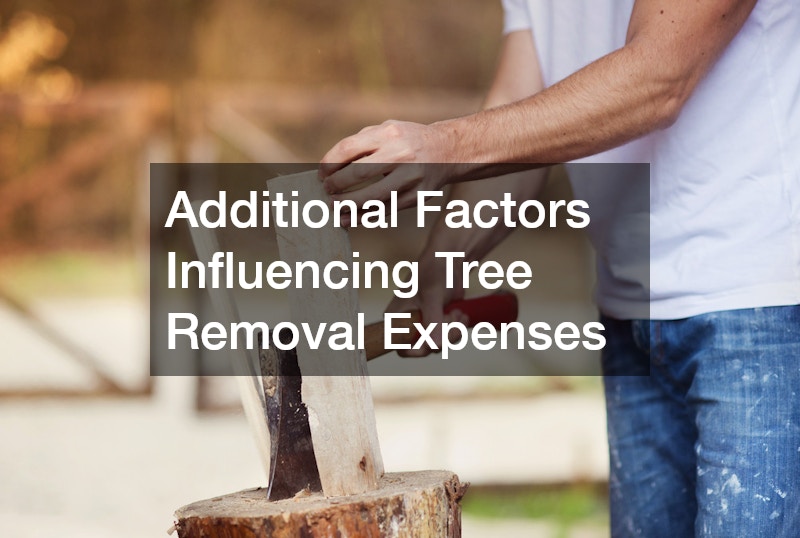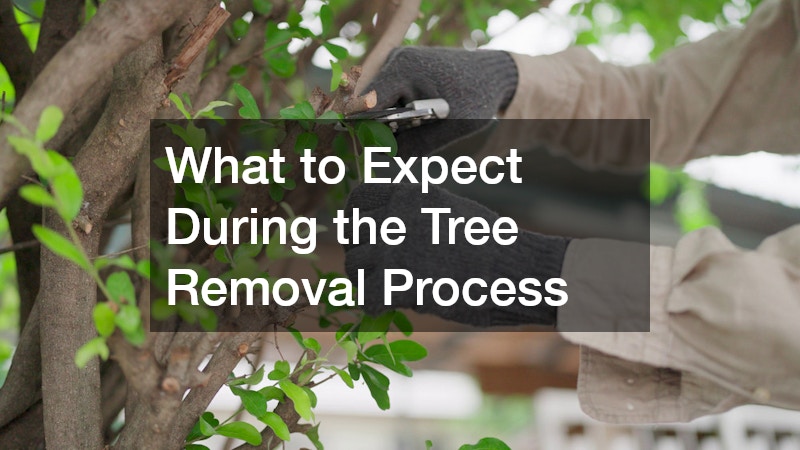Tree removal is a complex process that requires careful consideration and understanding. Whether due to safety concerns, disease, or aesthetic reasons, knowing what to expect can ease the process. This article addresses common queries related to tree removal to help prepare you for what lies ahead.
How to Know If Tree Removal Is Necessary
Signs a Tree Needs to Be Removed
There are several indicators that a tree may need to be removed. Trees that exhibit signs of disease, such as fungal growth, dying branches, or discolored leaves, may pose a risk to their surroundings.
Additionally, if a tree is leaning significantly or has large cracks in its trunk, it could be structurally unsound and warrant immediate removal to prevent potential damage.
Environmental changes such as soil erosion or root exposure can also compromise a tree’s stability. In urban areas, trees that interfere with power lines, structures, or pose a safety hazard in high-traffic areas should be evaluated for removal. Understanding these signs can help property owners make informed decisions about whether removal is necessary.
Consulting a Professional Arborist
Consulting a professional arborist can provide valuable insights and ensure an accurate assessment of the tree’s condition. Arborists are trained to recognize signs of disease and structural weakness that may not be immediately obvious to the untrained eye. Their expertise can help determine whether the tree can be saved through treatments or if removal is the best course of action.
An arborist not only evaluates the tree but also considers the surrounding environment, offering a holistic approach to tree care and removal. Their recommendations are based on experience and understanding of both the species in question and the local ecosystem. This helps property owners avoid unnecessary removals and make environmentally responsible choices.
The Typical Tree Removal Process
Initial Assessment and Quotation
The tree removal process begins with an initial assessment by the tree removal specialists. During this visit, professionals evaluate the tree’s health, structure, and the surrounding environment to determine the safest and most efficient removal method. This assessment allows them to provide a detailed quotation, including estimated costs and any special procedures required.
Factors such as the tree’s size, species, and its proximity to buildings or other infrastructure influence the complexity and cost of the removal. The initial quotation will typically include a breakdown of labor, equipment usage, and any required permits or additional services. Property owners should ensure they understand the scope of the work proposed and ask questions to clarify any uncertainties.
The Tree Removal Procedure
Once the assessment and quotation are finalized, the tree removal procedure begins with careful preparation and planning. Safety is a paramount concern, and proper equipment is deployed to ensure a controlled removal. Depending on the size and location of the tree, techniques such as climbing, rigging, or the use of cranes may be employed to dismantle the tree systematically.
The removal process often starts with cutting down branches to reduce the size and weight of the tree before addressing the trunk. This methodical approach prevents unnecessary damage to the surrounding area and minimizes risks to workers and nearby structures. Each branch and section of the trunk is carefully lowered to the ground, maintaining a clean and safe work site.
Costs and Factors Influencing Tree Removal
Cost Variability Based on Tree Size and Location
The cost of tree removal can vary significantly based on the tree’s size, type, and location. Larger trees typically require more personnel, equipment, and time to remove safely, resulting in higher costs. Trees situated close to homes, power lines, or other sensitive areas present increased complexities and may incur additional charges due to the need for specialized techniques and equipment.
Accessibility is another critical factor that influences pricing, as trees positioned in hard-to-reach areas may require more labor-intensive methods to remove. Urban locations often involve additional considerations such as permits or dealing with traffic congestion, which can further impact costs. It’s essential to obtain detailed quotations that account for these variables to avoid surprises.
Additional Factors Influencing Tree Removal Expenses
Beyond size and location, several additional factors can influence the overall expense of tree removal. Emergency removals, which require immediate attention due to storm damage or imminent risk, often incur higher costs due to the urgency and potential need for after-hours services. The requirement for permits, particularly in urban or environmentally protected areas, can also add to expenses.
Moreover, homeowners might choose to invest in ancillary services such as stump grinding, wood chipping, or landscape restoration, which enhance the project’s final outcome. These services provide value by improving safety, aesthetics, and preparing the site for future use or renovation. Comprehensive estimates should cover these options, allowing clients to make selections based on their preferences and budget.
Understanding the tree removal process can help you make informed decisions and prepare for the associated activities and expenses. Always remember to consult with professionals for safe and efficient tree removal and consider all factors involved in the process for the best outcome. Armed with this knowledge, property owners can confidently undertake necessary removals and enjoy the benefits of a well-maintained landscape.


